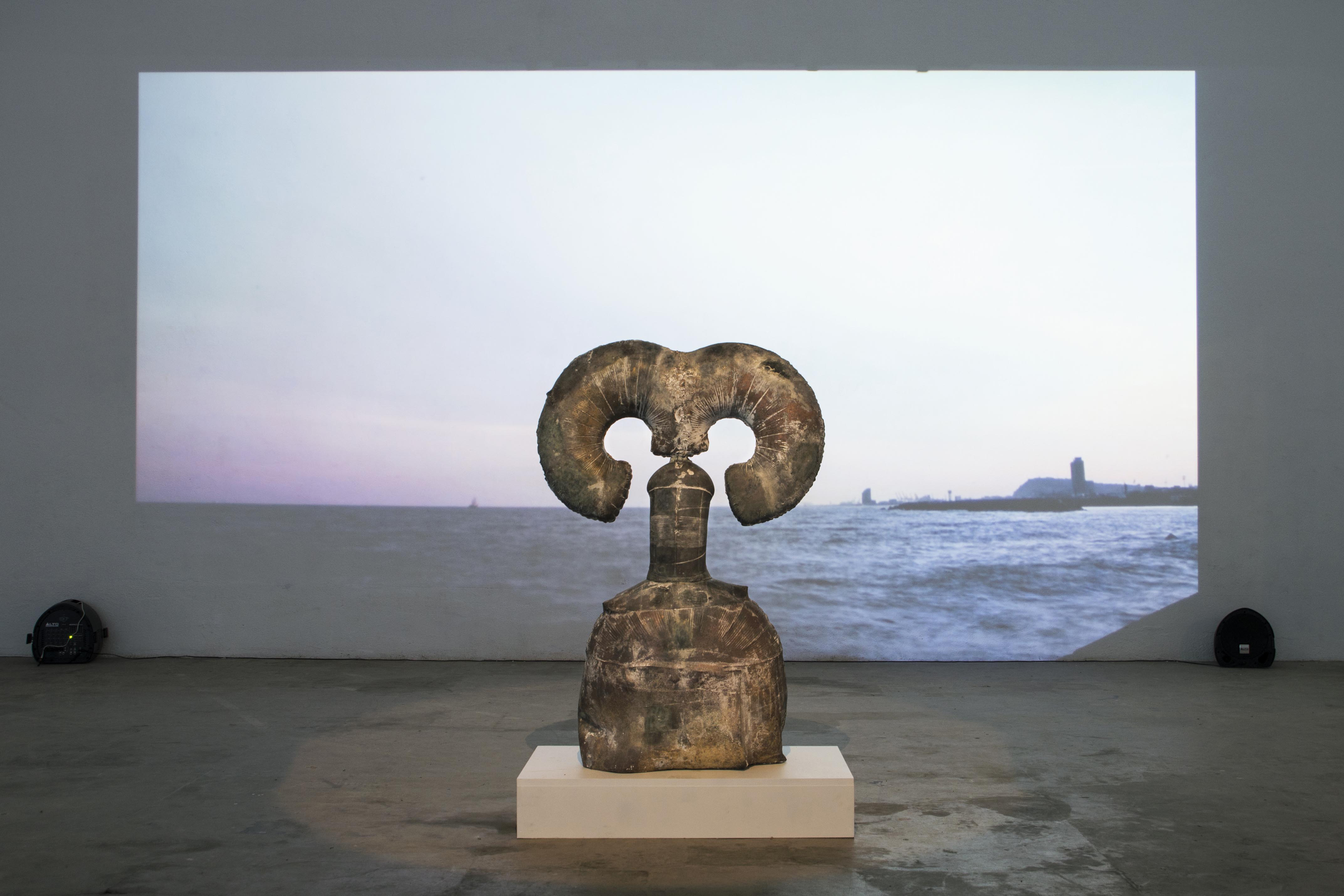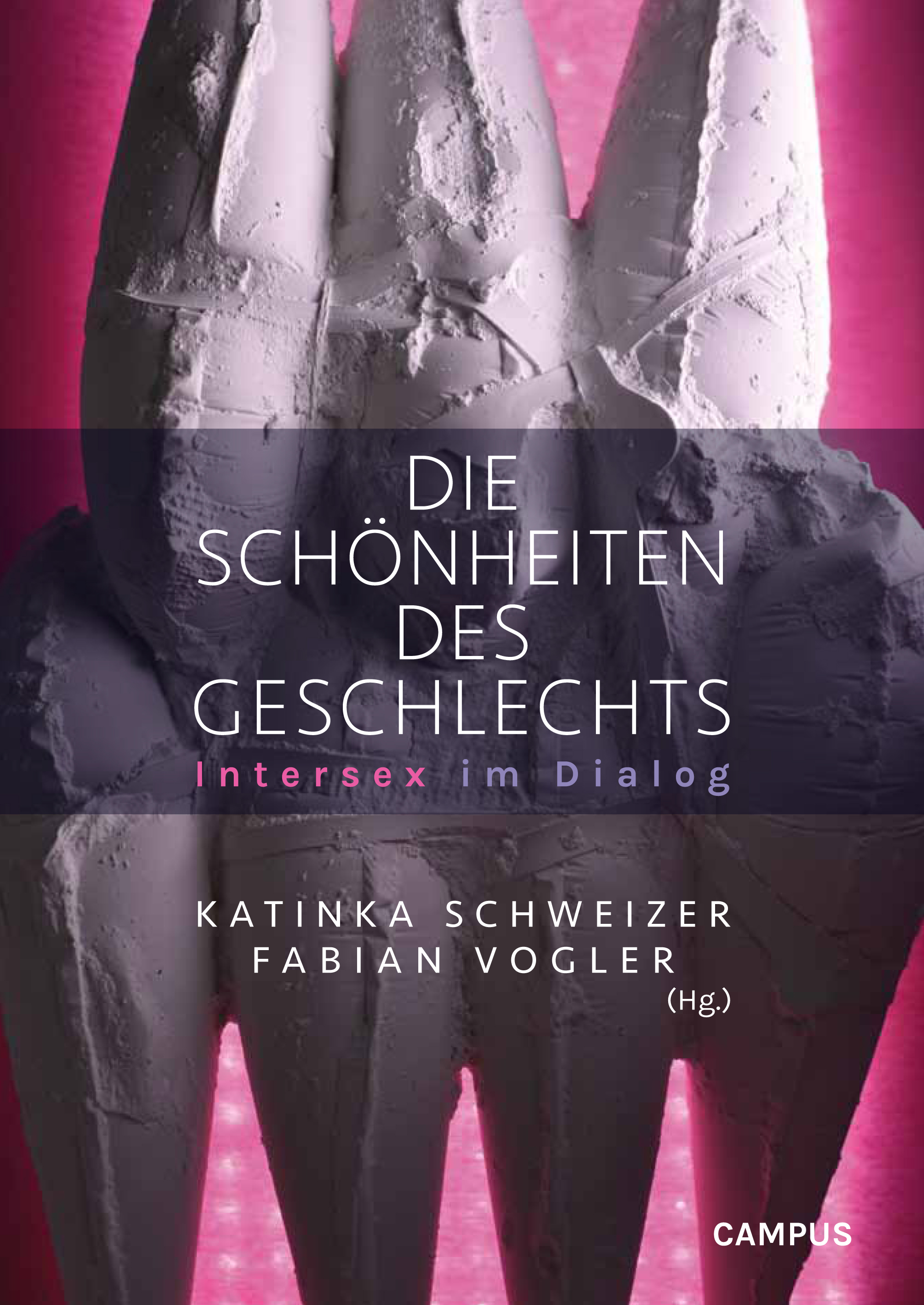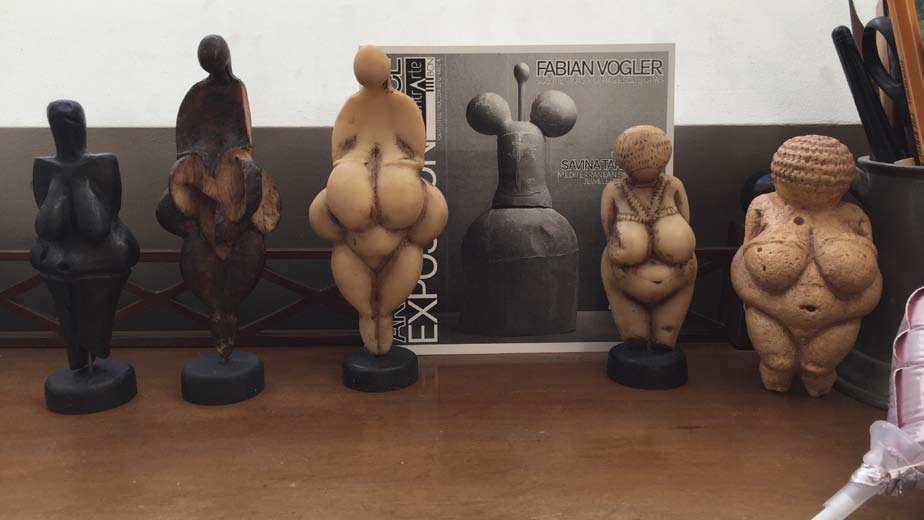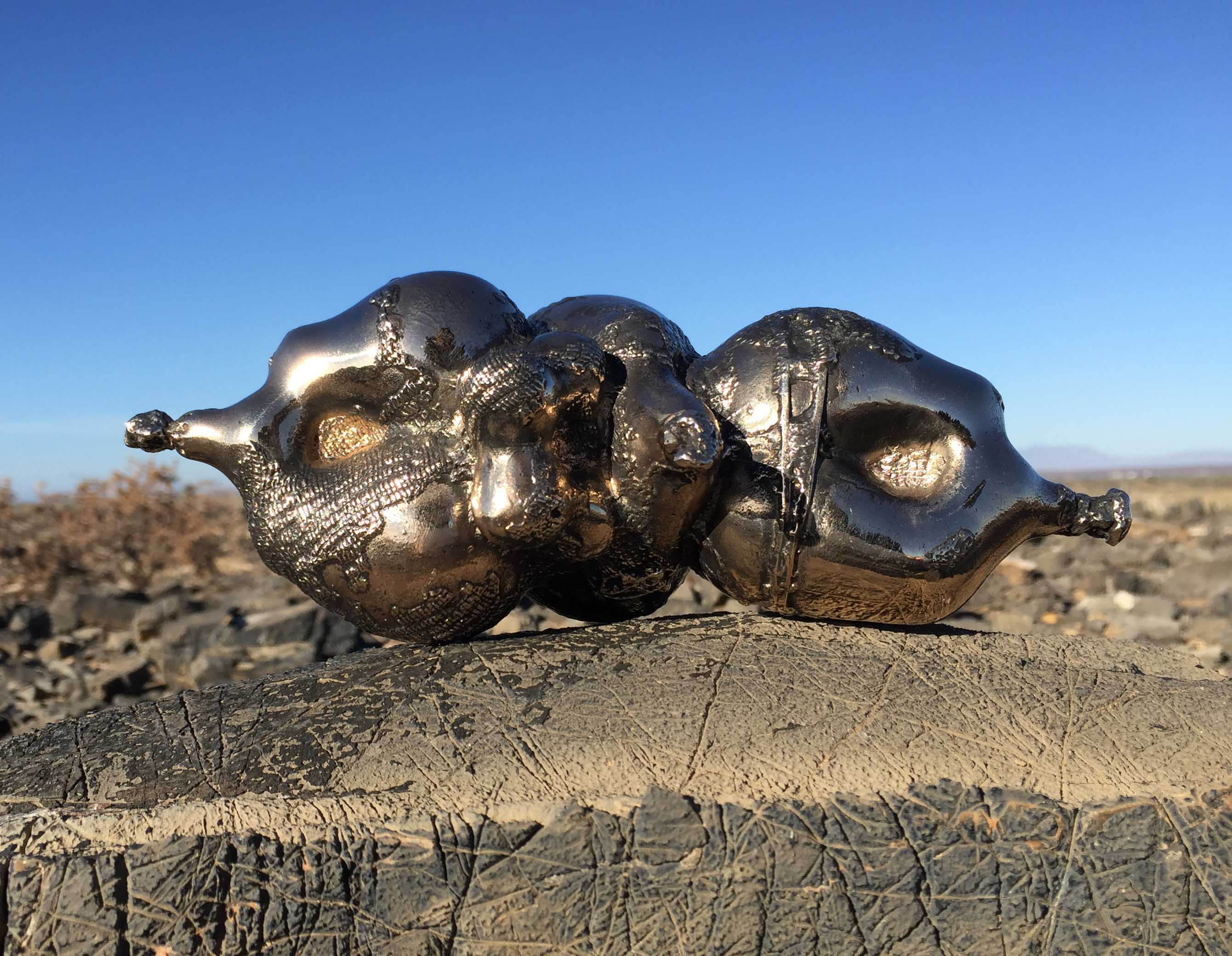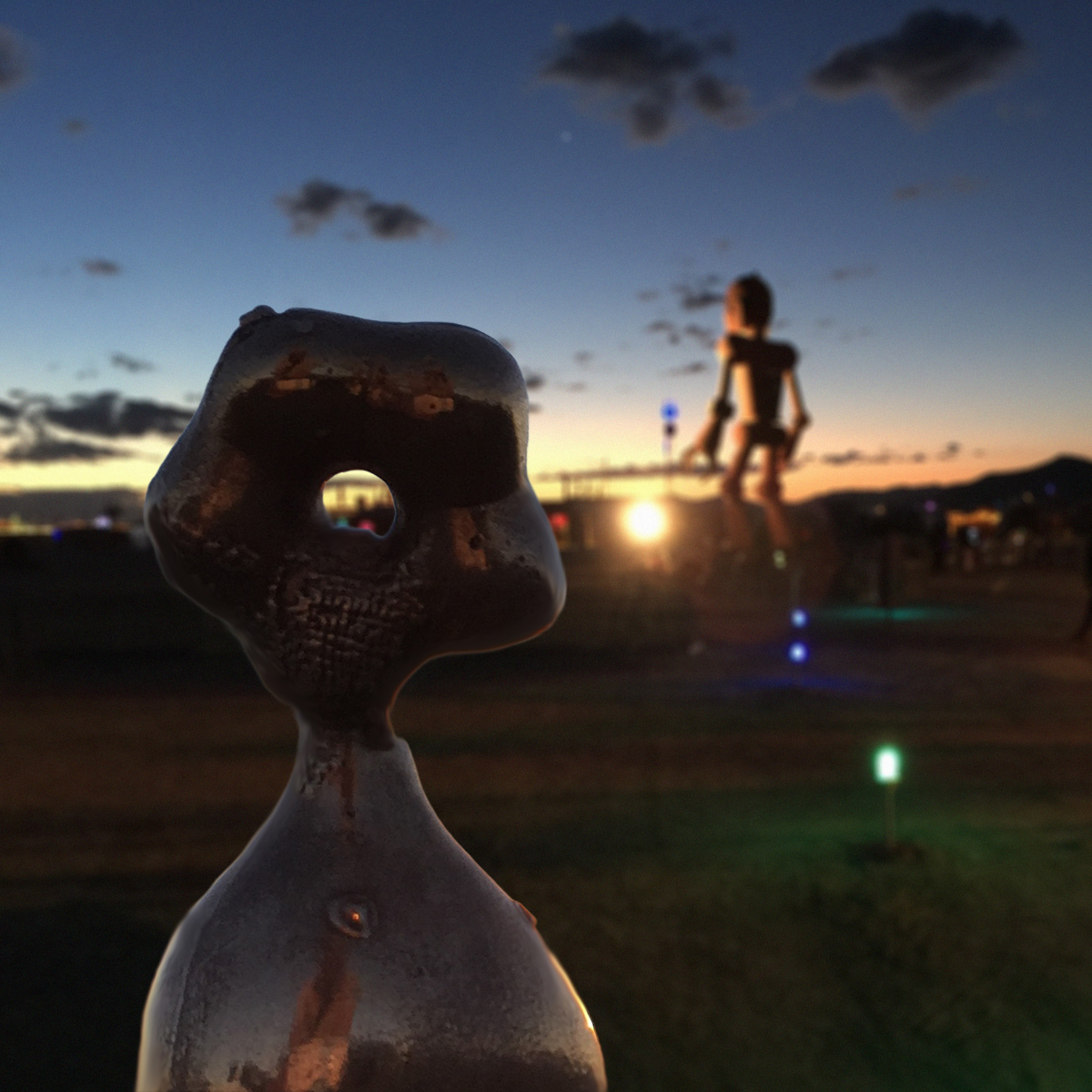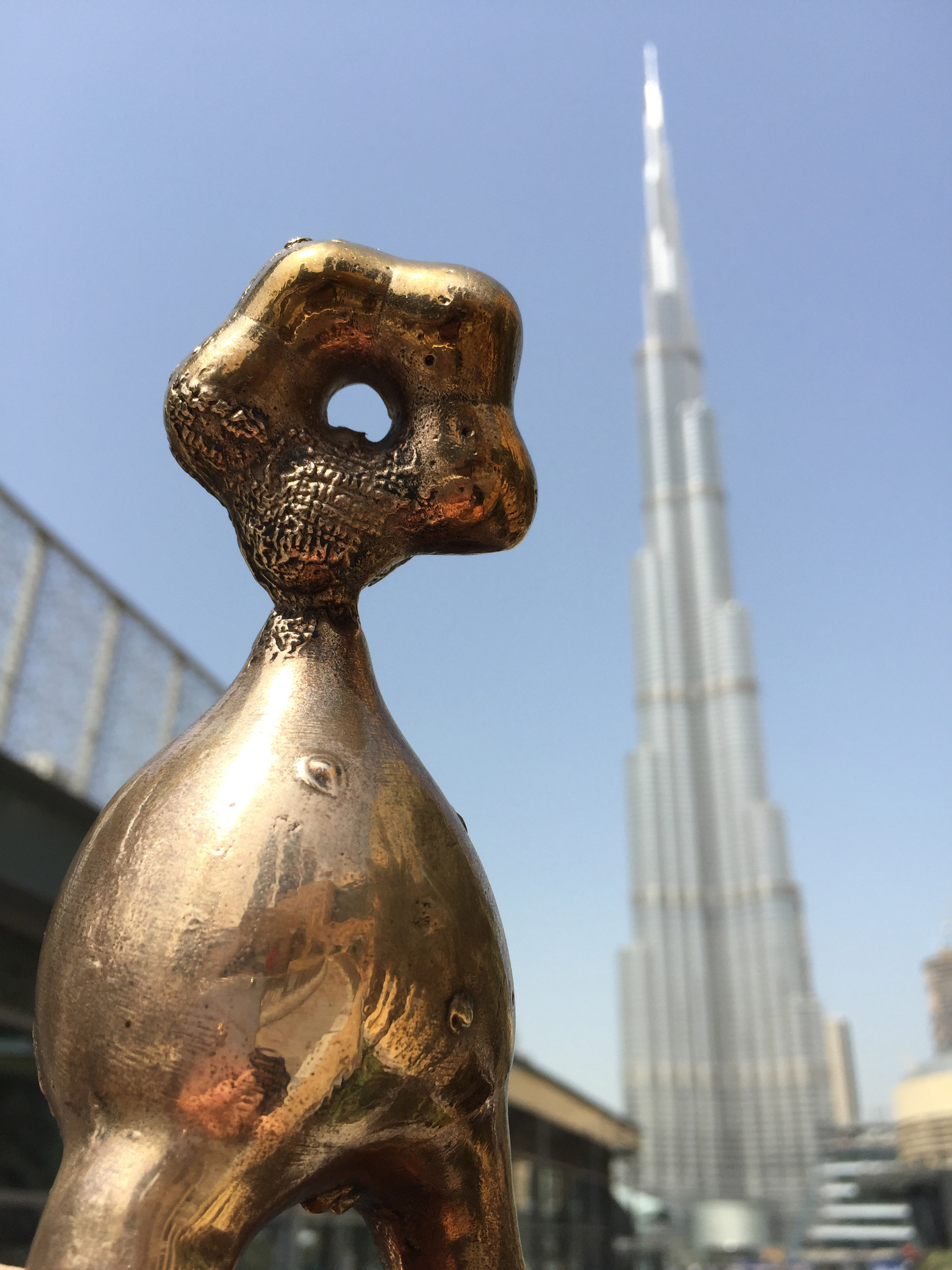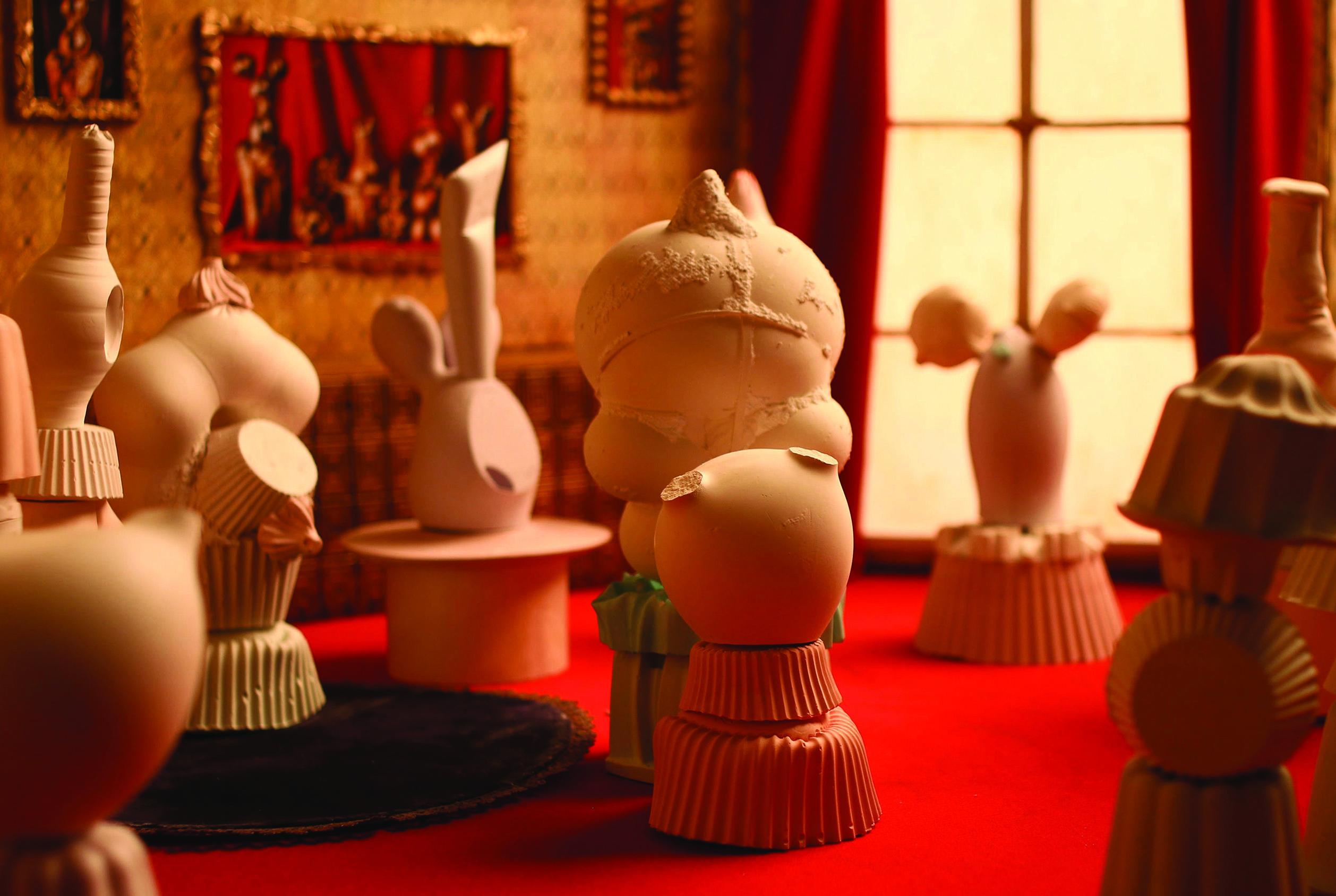Sculptor Fabian Vogler Talks About “Liquid Gender”
Dear Fabian, welcome to Art For Progress. As a contemporary artist based in Northern Germany, North Friesland. What is the focus of your art?
Hi Nerea, thanks for inviting me to this interview. I am delighted to contribute to Art for Progress. I am a sculptor focused on the human figure in the widest meaning. I try to find ways for contemporary depiction of the diverse spectrum of human expressions.
Having studied Fine Art Sculpture in Vienna, where modelling the human body has a long tradition – the so called “Wiener Schule,” I further worked in this direction in London, where I did my masters. I started to introduce new materials, inflatables and other ephemeral objects, as base bodies for my figurative constructions. When depicting an entire human figure, at some point you always need to decide whether or how much you show its gender. If you disregard it – partially or completely – you enter the world in-between genders. For the last five years in particular, I have been focusing on “Liquid Gender” and the liquidity of gender aspects in general.
I have noted that you chose the term “Liquid Gender” as a name for your recent exhibition in Barcelona. Can you please explain this choice.
“Liquid Gender” was indeed the title of the 2016 solo show, curated by Caterina Tomeo, at the end of a five-week residency at Espronceda (Centre for Art and Culture) in Barcelona. The central piece was a 2-channel video installation around my large-scale MENINA bronze series: A video of my MENINA | 7, set in the North-friesian Landscape, was contrasted with the actually exhibited bronze MENINA | 3 backgrounded by a cityscape of Barcelona; the whole was combined with the specially designed sound installation “Emotional Decryption” by the Italian Composer Francesco Giannico – a 6-channel sound installation audible partly in the exhibition space and partly through WIFI headphones.
Image 1: Fabian Vogler, MENINA | 3 (2013-2016, bronze, 140 x 92,5 x 48 cm) as part of the video installation “Liquid Gender”
Why are you so interested in that topic?
Whilst I have, personally, been assigned “male” at birth and I am living a rather “traditional” family life, with my wife and our two children. I have always felt uneasy about gender stereotypes; in other words, I have neither found the basic binary concept of two totally distinct genders nor the customary generalizations about their respective characteristics and roles convincing.
At the age of 35, I heard a lecture by German psychologist Katinka Schweizer on “Gender Identities;” only then I learned that some people are intersex – e.g. come to live with ambiguous genitalia – and furthermore that every person as a fetus is intersex up to the seventh or even twelfth week of development. I was flabbergasted to have never heard about this during my entire school education, nor during my later academic studies (and I keep on wondering why).
What I learned then, gave a new meaning to an earlier statement by Gerda Fassel, my teacher during my studies at the University for Applied Arts in Vienna, who had asserted that, as far as shapes were concerned, male and female in their primary genitalia are very much alike. The main difference being the extent to which the genitalia are pointing inwards or outwards or, put differently, the grade of their concavity or convexity.
In my view, the manifold expressions of intersex, which I have since become aware of, are physical proof of the misguided binary gender construct; this even more so, as the primary genitalia are only one aspect of gender identity. There is also the gonadal, chromosomal and hormonal gender that form us. Gaining an understanding of all this – and it took me quite a while to overcome my implanted conditioning in respect of the gender dichotomy – has significantly changed my outlook on the human figure, the main object of my work as a sculptor.
Where does the concept of Liquid Gender come from?
The term was, to my knowledge, coined – in 2013 – by German sociologist Volkmar Sigusch to describe the fact that for many human beings, in contrast to the fixed assignment in their birth certificates, gender tends to be, in varying degrees, subject to changes in the course of different phases of the individual’s life span. I find it a particularly meaningful and even catchy term.
It seems that you are devoting a lot of energy to the subject if Liquid Gender, Fabian.
Yes, in parallel with my ongoing sculpting work, during the last three years I have devoted quite some effort to the trans-disciplinary publication “Die Schönheiten des Geschlechts. Intersex im Dialog“ (The Beauties of Sexes/Genders. Intersex in Dialogue); this was an exceedingly stimulating and challenging project in close cooperation with Katinka Schweizer, of University Medical Center Hamburg-Eppendorf (UKE).
By the way, one of our many contributing co-authors is Volkmar Sigusch, the creator of the term Liquid Gender.
Image 2: Book Cover “Die Schönheiten des Geschlechts. Intersex im Dialog“ (The Beauties of Sexes/Genders. Intersex in Dialogue) – edited by Katinka Schweizer und Fabian Vogler, Campus Verlag (Frankfurt/New York), 424 pages with over 200 color images, Hardcover – release date 12th April 2018
Explain to us what this book is about?
Katinka Schweizer and I were united in the determination to bring together a variety of acknowledged academics, from different sciences, and of experienced practitioners who would be prepared to contribute their respective experiences, informed views as well as academic insights to a profound joint publication; and we wanted to combine these written contributions with a selection of recent artistic expressions on the subject matter.
The idea of this art|book|project is to combine a variety of scientific and practical perspectives with fine arts, thus providing a source of deeper and more faceted knowledge about intersex and gender for a wider audience of people who so far have not had a meaningfully differentiated access to the subject.
Do you often work together with other artists?
I enjoy the energizing factor in cooperating with people in general, and with other artists in particular. I always have the feeling that working together is not adding but rather multiplying forces. And from a social point of view you approach a person on a very special level. You get the chance to see your work interpreted through the senses of someone else – very often a precious gift that can give great progress to reflecting one´s own work in new ways.
My earliest multidisciplinary experiment has been my finishing masters project in London: “Octave Stance” in cooperation with Dominic Murcott from the Trintity College of Music London and Tony Thatcher from LABAN London. I had the idea to find 8 musical compositions for my 8 curated sculptures. This idea was developed further during the process to also include 8 dedicated dance performances. “Octave stance” ultimately took place in 2008, in the profaned Chapel Dilston Grove, with dance performances between and around my sculptures, to the dedicated music played live by its respective compositors – a highly emotional experience for me.
Back in Germany, in 2014 I joined forces with two artists from other disciplines, namely the classical ballet dancer Tanja Probst (Landestheater Schleswig-Holstein) and the piano and synthesizer composer Rudolf Kitzelmann; the result was a live performance on the stage of the NCC Husum during the Kultur21Festival with my sculptures captured in projected clips.
Image 3: Venus replicas together with a photo of Menina | 1
Image 4: Inter*Venus | 2 in Tonkwa Karoo National Park in South Africa
Your sculptures look very archaic, … but you often bring them into today’s life. They travel the world! Right?
Bronze has always been my material of choice, because of its specific qualities: it is durable and at the same time I can make it emanate a kind of warmth which I find particularly appropriate to the human body. In my works, I pay a lot of attention to surface detail, an important aspect of which patina is. The almost infinite variety of possible patinas allows me to create very different appearances: Depending on how you treat it, the patina changes or rather “develops” over time under the eyes of its owner – a unique characteristic.
Still bronze has a long tradition which l like to question by setting it into unaccustomed realms. That is why I started documenting some of my sculptures not in the usual white cubic setting in city- or landscapes. “Gerwin” was the first to travel the Brussels (Belgium) with me, and thereafter “Dittmar’s brother”started accompanying me on my jouneys to exhibitions and conferences – the so called “Dittmar’s Brothers’ Travels”. (It is a reference to the Austrian photographer Willi Puchner who, in 1992, traveled the world with two plastic penguins, which was then adapted as part of the fabulous movie “Le fabuleux destin d’Amélie Poulian” by Jean-Pierre Jeunet in 2001.)
Dittmar’s brothers have so far been in over 30 locations around Europe, the United States, Israel, and the Emirates with me – sometimes accompanied by artist colleagues (e.g. François de Rivoyre in the city of Leipzig, Germany) or sometimes even traveling on “its own” accompanying friends to New Zeeland and Russia (psychologist Viktoria Märker) or to Japan (video artist Bianca Kennedy).
Image 5: Dittmar at Burning Man 2015 in Nevada, USA
Image 6: Dittmar’s Brother in Dubai (UAE), 2017
In 2017, Bianca Kennedy and I united to jointly produce the stop motion animation LIMBO WEEKS (8:09min). Creating little film sets for this purpose was a great experience for me, stimulating me to also think about new ways of presenting some of my own work. The film has been touring around film festivals around Europe for the past year with quite some success, winning the Grand Prix at the Transmission Film Festival (Kassel, Karlsruhe and Warsaw) and as best movie at the Berlin Experimental Filmfestival (Category: Berlin Originals).
Image 7: Film still of Limbo Weeks
Where do you showcase your work?
So far, I have shown my work internationally in many parts of Europe, as well as nationally – through a locally situated gallery, Galerie Lüth in Husum (Germany) close to my studio. I enjoy the wide variety of opportunities arising from the connections between working and showcasing. Exhibitions have often led to invitations to give workshops at universities and schools, or to participate in symposiums like in Denmark or Switzerland. Recently, in Barcelona, I was invited to even organize a symposium (INTER_WE | an Arts Symposium on Gender Liquidity – www.inter-we.com) at the Design Museum in cooperation with the curator Valentina Casacchia ans Espronceda, giving book presentations and talks at conferences.
Stays as “artist in residence” have proven to be great opportunities to leave the “safe” environment of the own studio and to get in contact with stimulating new people. Furthermore, residencies as well as exhibitions abroad are giving me the welcome opportunity to travel whilst working, and I like to combine these journeys to further extend the photo series pertinent to my works; in a way, they make me see the world through the eyes of my sculptures.
What is the inspiration for your art works?
Some key inspirations for my sculptural work have come from ethnological collections. The most prominent examples are prehistoric Venus depictions such as the “Venus of Willendorf” or the “Venus von Hohle Fels” that are up to 40.000 years of age; these fascinate me a lot, because of the expressed liberty of designing the human body in search for “super forms” depicting contemporary human entities. Like time capsules they freeze facets of mankind of a certain distant period thus making me ask myself how we would need to sculpt the human body today in order to give excavators in another 40.000 years a meaningful insight into important characteristics of our time.
My Meninas have been inspired by “Las Meninas” by Diego Velazquez, of course, and by the cycle of 60 paintings created by P. Picasso, which I came along during my first Artist Residence in Barcelona in the Picasso Museum in 2013. Already during my studies in Vienna, I had been sketching in front of Velazquez singular portraits of Infantin Margaritha which are on display in the “Kunsthistorische Museum Wien”, completely absorbed and fascinated by the great inventory of the Renaissance and Baroque fashion – in my view the most daring phase in western art history for developing a style of its own, inventing the proportions of the human body further than the buff mimetic copying of nature.
And your work process?
After having had a broad classical education in the traditional sculpting, modelling and casting techniques during my studies in Las Palmas de Gran Canaria (Spain), Flensburg (Germany) and especially Vienna (Austria), Then I discovered inflatable objects such as balloons and rubber tubes during my time in London. Deformation and fragmentation are important aspects of destroying the boring perfection of the technicality of the balloon. It needs to be pushed back in its immaculate expansion. I have thus, through many years, developed special techniques of re-shaping the balloon, deforming it to reflect my intentions. Recently, I have additionally introduced waste objects and customary shapes of everyday use into my repertoire.
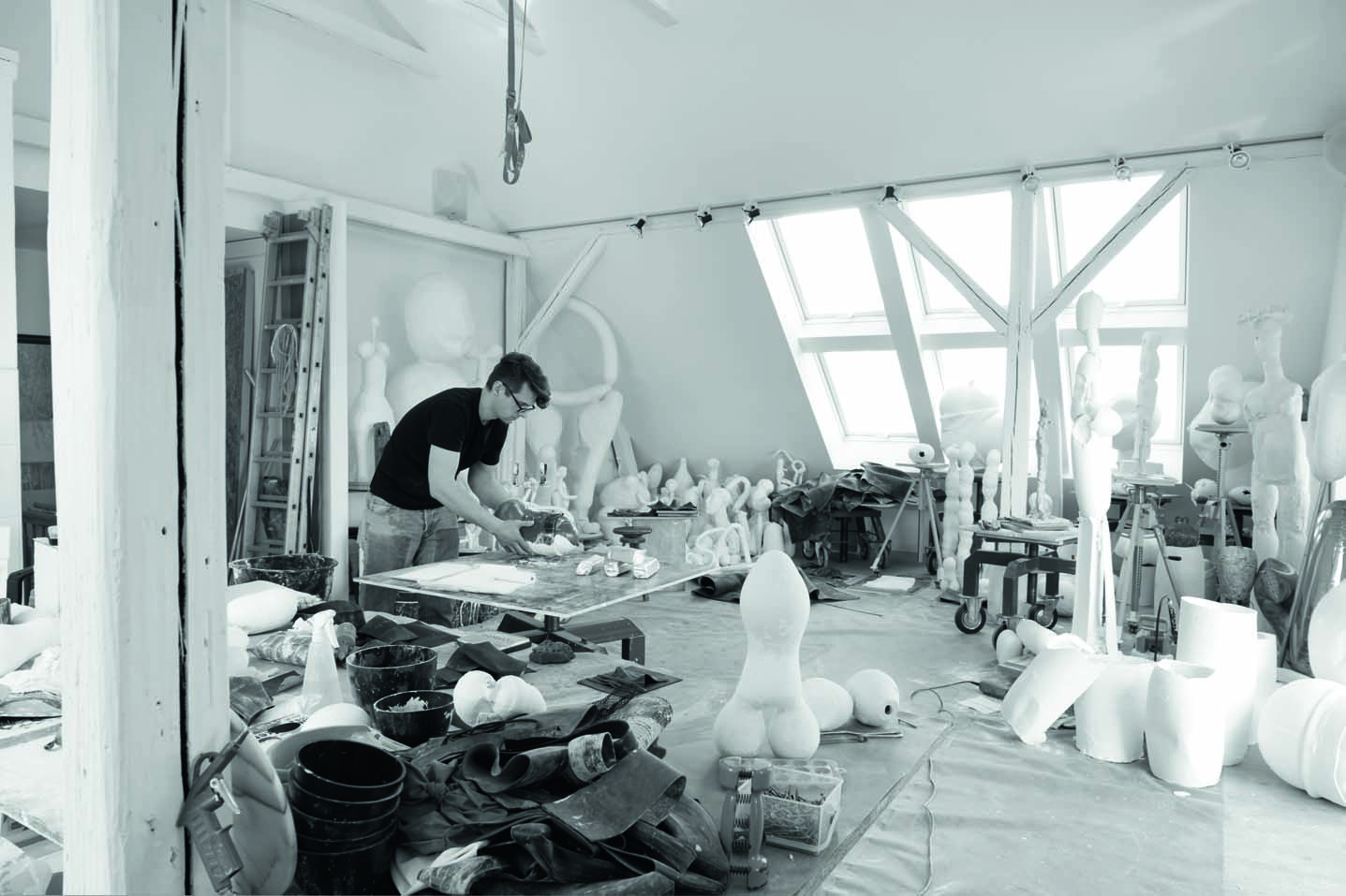
–Nerea T. Ruiz

